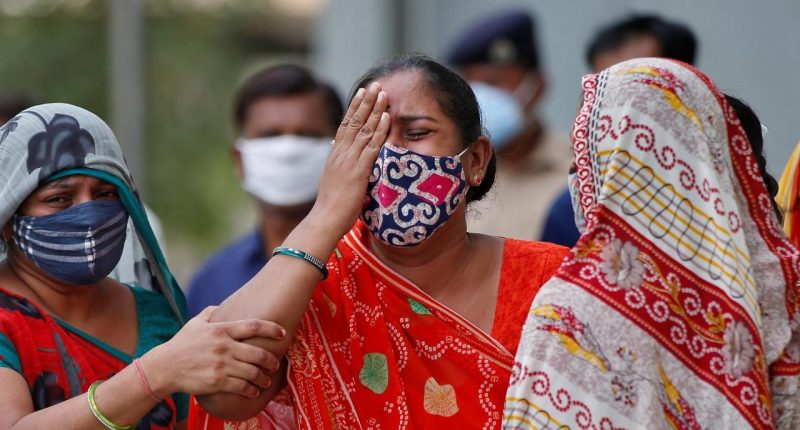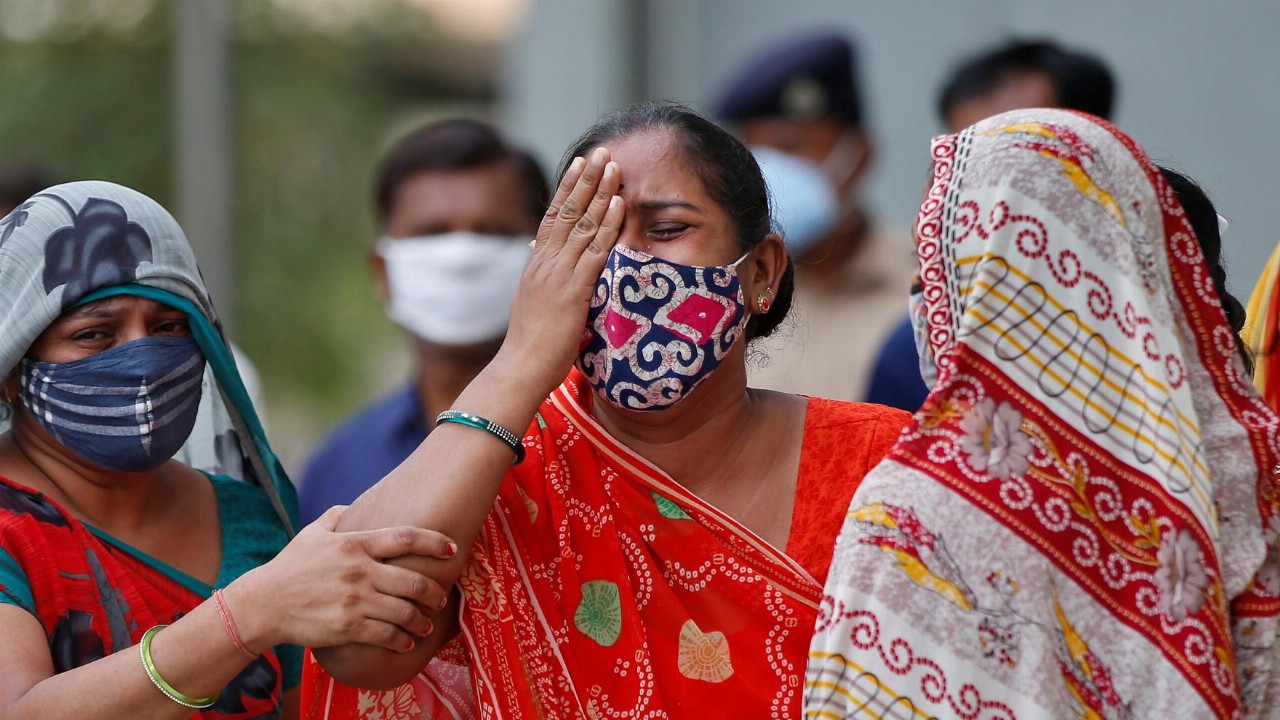- India recorded a further decline in new COVID-19 cases on Monday, but experts say the data is unreliable due to a lack of testing in rural areas
- According to data from India’s health ministry, the number of new infections over the last 24 hours came to 281,386
- That pushes overall infections past the 25 million mark — a milestone only hit previously by the United States
- Officials have pointed to the “very high” national positivity rate — around 20 per cent of all tests conducted — as a sign that there could be worse to come
- Adding to the ever-spiralling situation is the country’s worst cyclone in more than two decades, which made landfall in the state of Gujarat late on Monday
India recorded a further decline in new COVID-19 cases on Monday, but experts say the data is unreliable due to a lack of testing in rural areas.
For months, the country has been setting a string of grim records as a new, highly contagious strain of the virus fuels a surge in infections that has risen to more than 400,000 each day.
According to data from India’s health ministry, the number of new infections over the last 24 hours came to 281,386 — dropping below 300,000 for the first time since April 21 — while deaths in the same period reached 4106.
That pushes overall infections past the 25 million mark — a milestone only hit previously by the United States — and the total number of deaths to 278,719.
Even with a marginal slump in reported cases over the last few days, health officials say there is no indication that infections have peaked.
“There are still many parts of the country which have not yet experienced the peak, they are still going up,” said World Health Organisation Chief Scientist Soumya Swaminathan.
Swaminathan pointed to the “very high” national positivity rate — around 20 per cent of all tests conducted — as a sign that there could be worse to come.
“Testing is still inadequate in a large number of states. And when you see high test positivity rates, clearly we are not testing enough,” she said.
“And so the absolute numbers actually don’t mean anything when they are taken just by themselves; they have to be taken in the context of how much testing is done, and test positivity rate.”
It’s widely accepted that India’s official figures significantly understate the real impact, with some experts suggesting the actual number of infections and deaths could be up to 10 times higher than those reported.
Adding to the ever-spiralling situation is the country’s worst cyclone in more than two decades, which made landfall in the state of Gujarat late on Monday and forced 200,000 people to evacuate their homes.
“The landfall process has started, and it is expected to last for four hours. The intensity of the Cyclone Tauktae will go down once it is over,” Gujarat Chief Minister Vijay Rupani said in a social media address on Monday evening.
That said, it’s already killed 16 people and left a trail of destruction as it brushed past the coastal states of Kerala, Karnataka, Goa and Maharashtra.
State revenue secretary Pankaj Kumar told Reuters it would be the most severe cyclone to hit Gujarat in at least 20 years. A 1998 cyclone killed at least 4000 people and caused hundreds of millions of dollars in damage in Gujarat.








